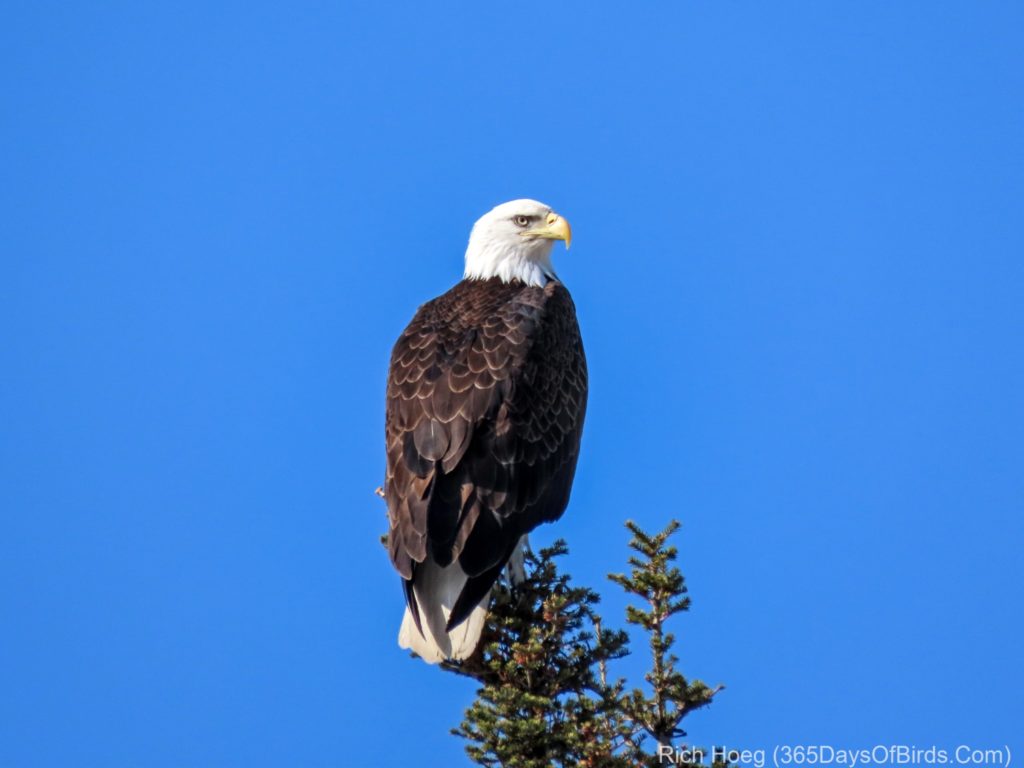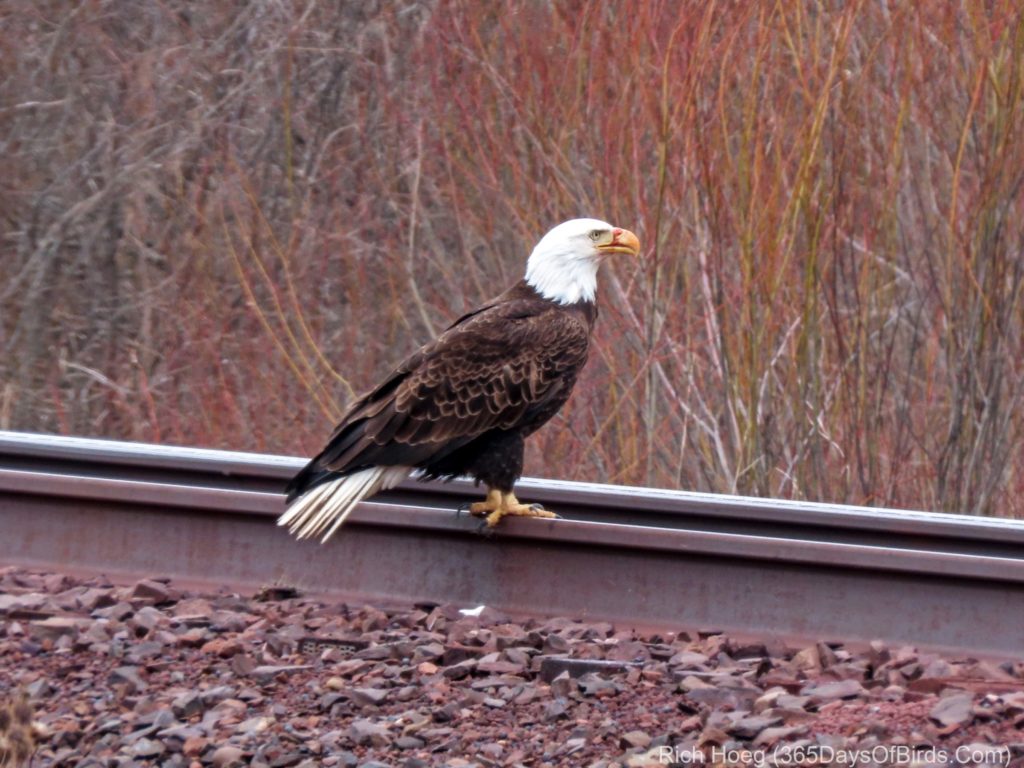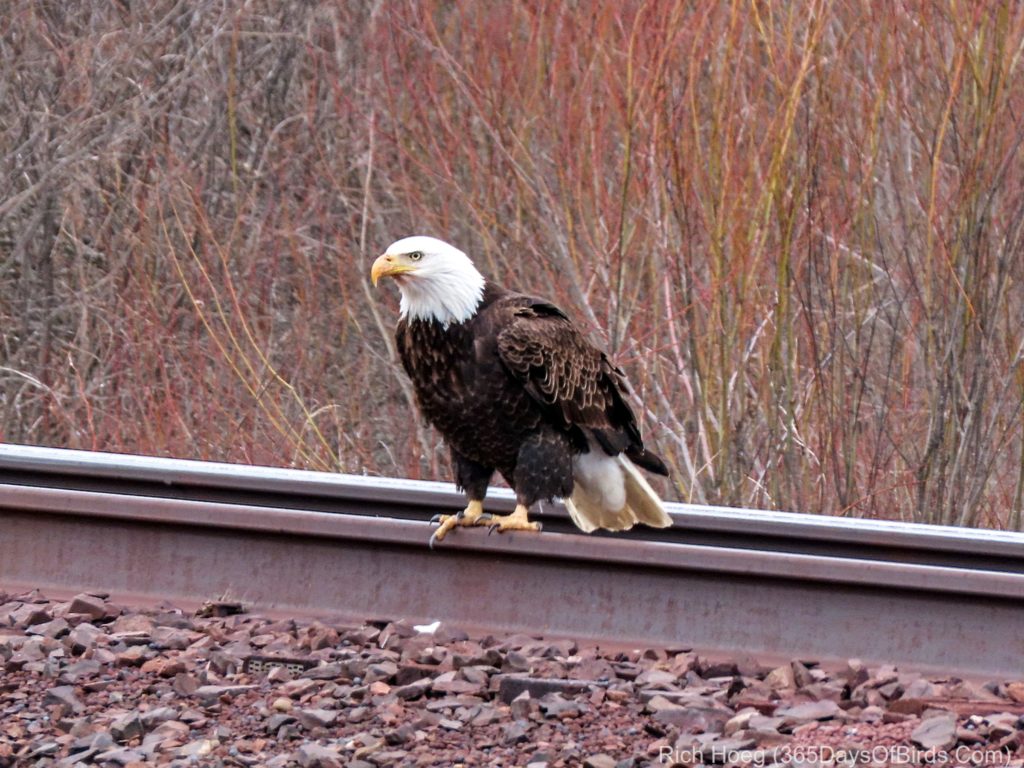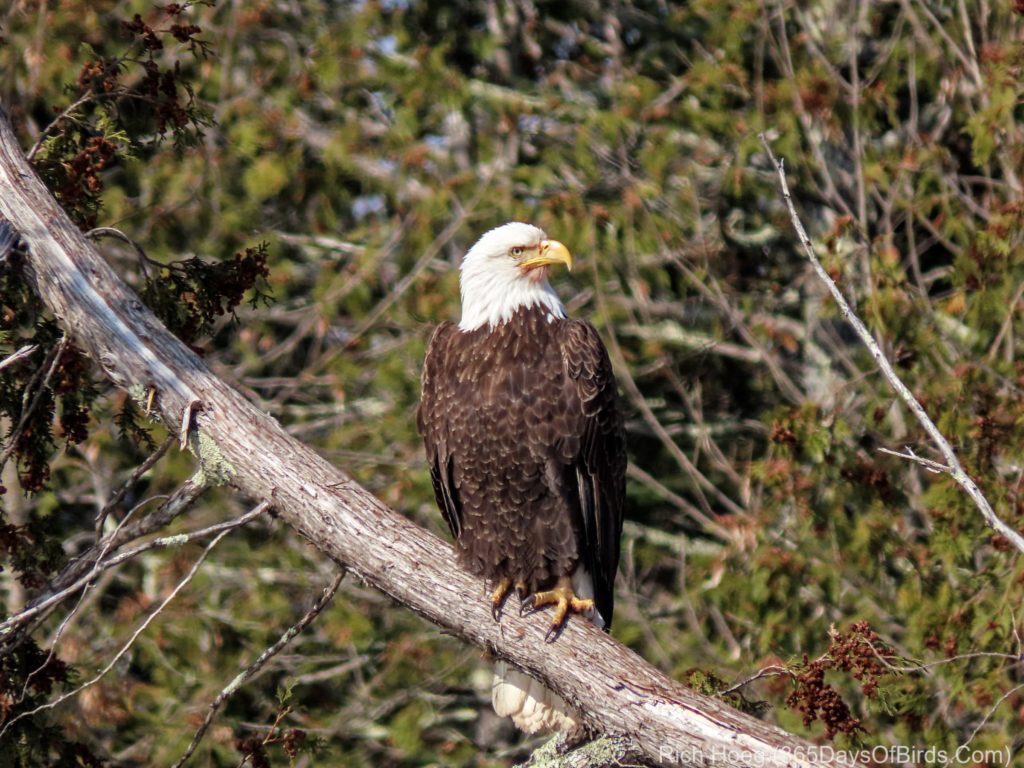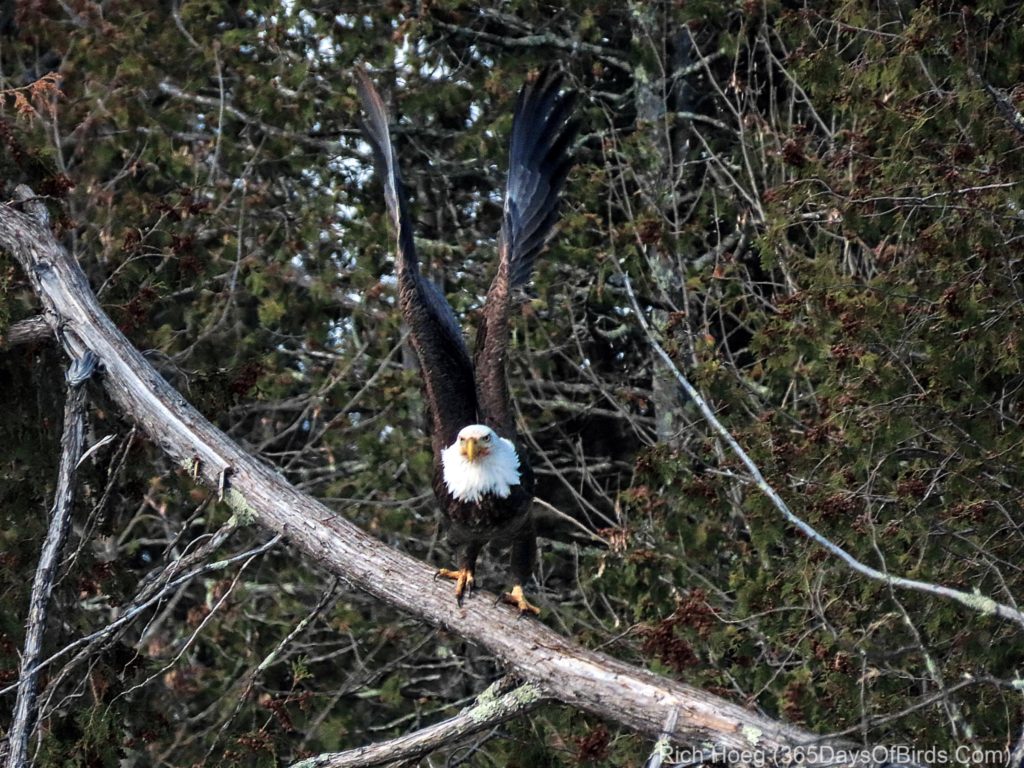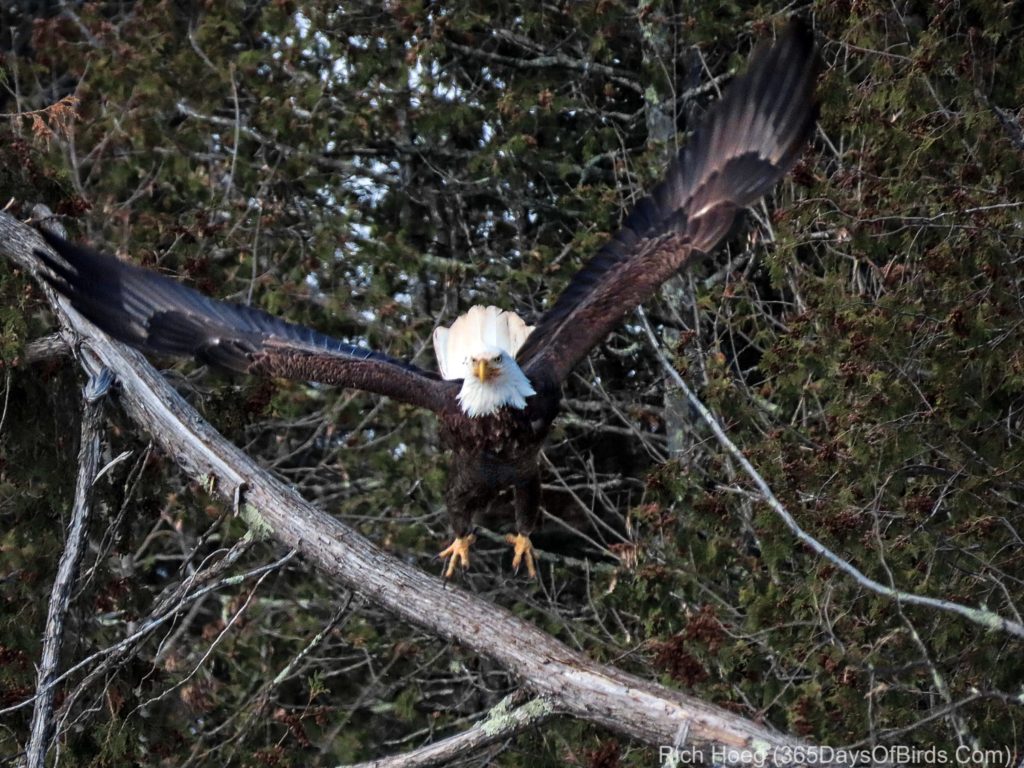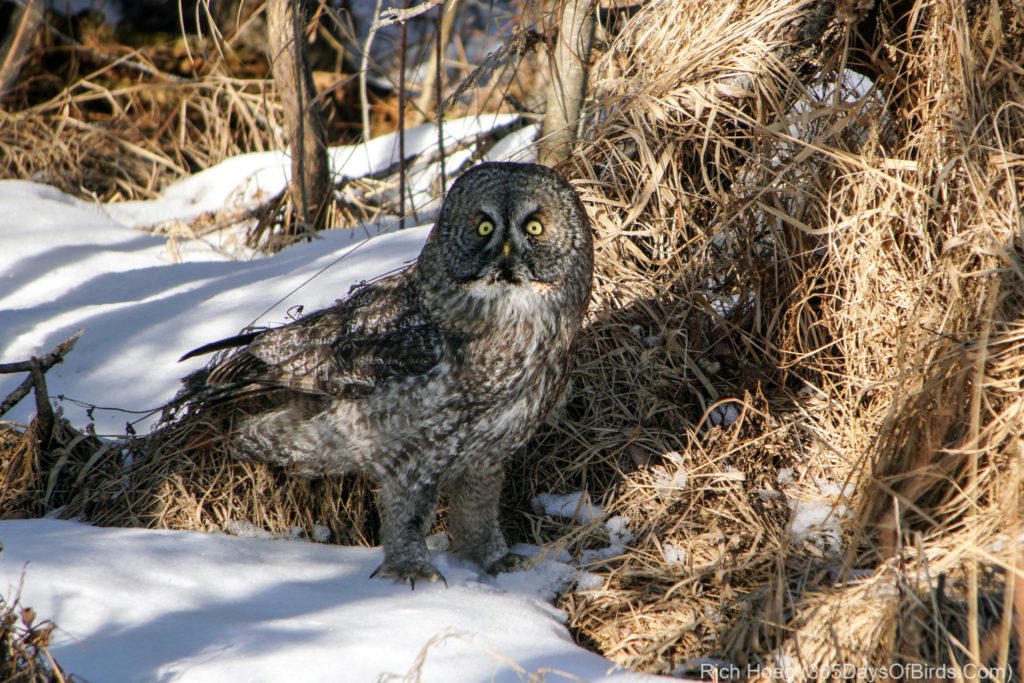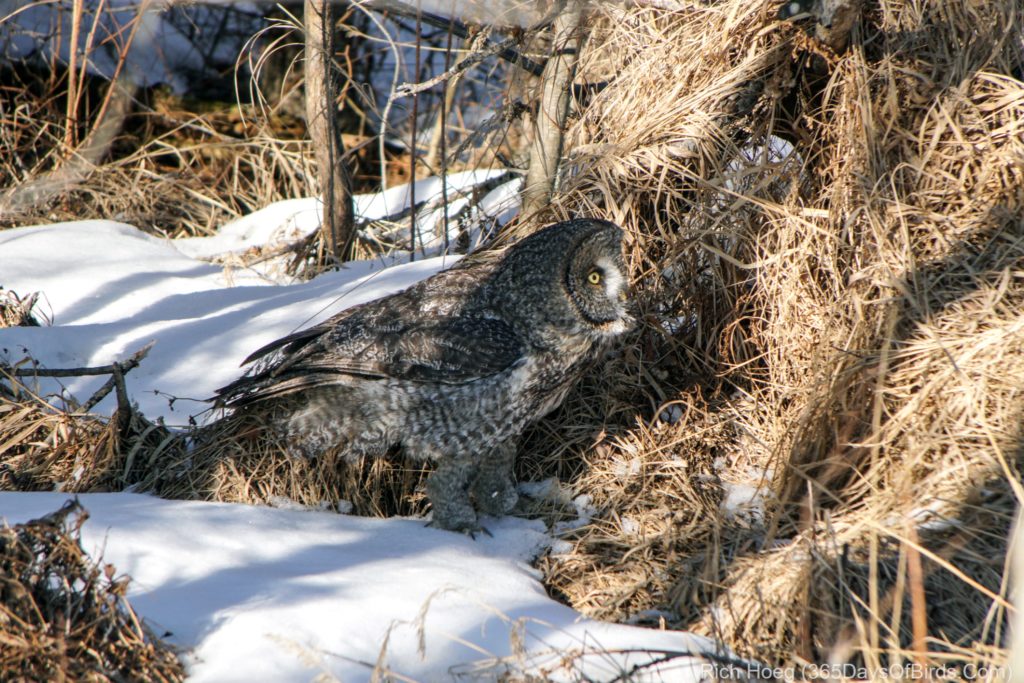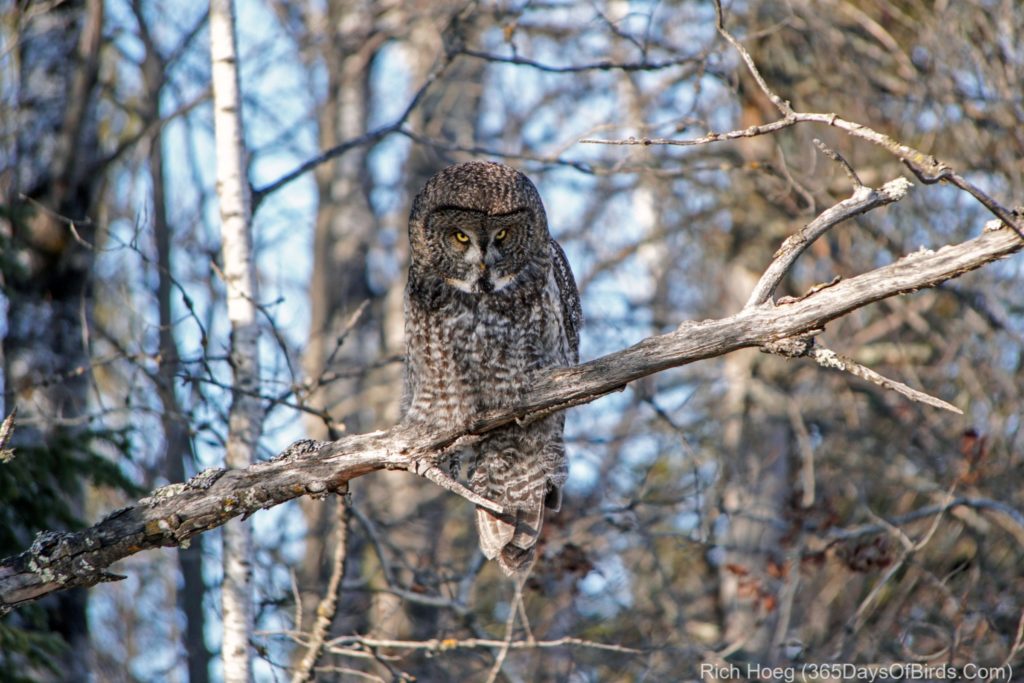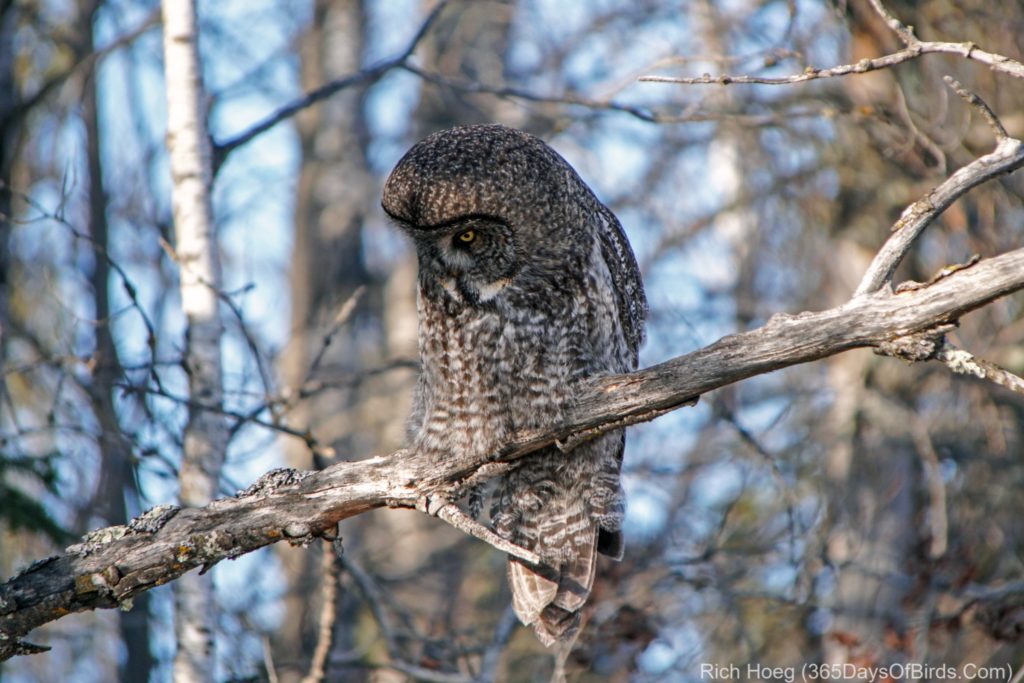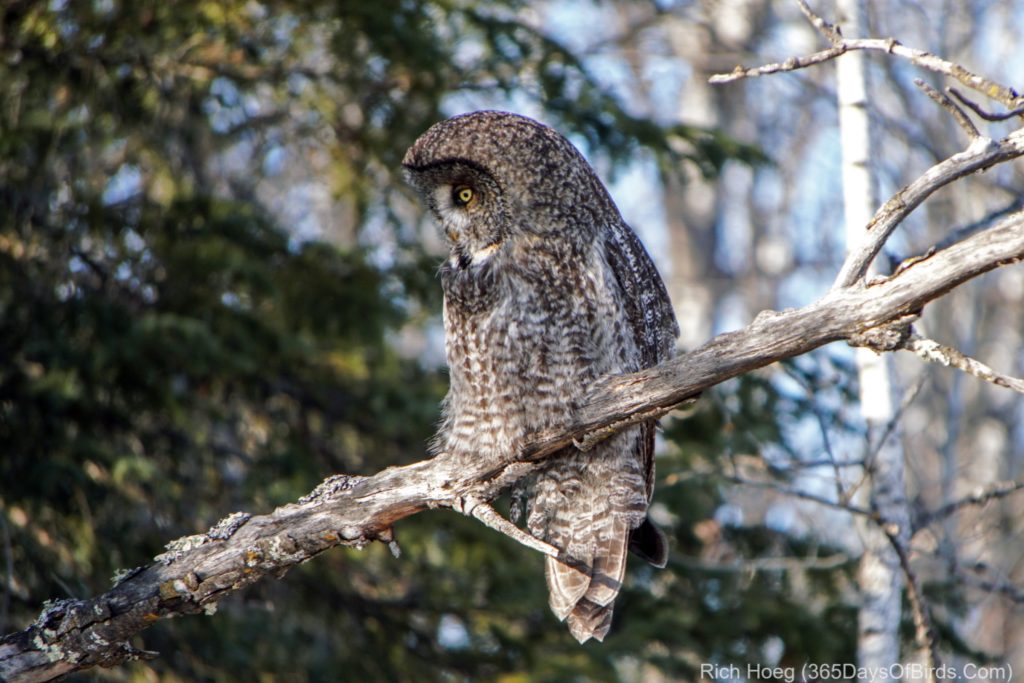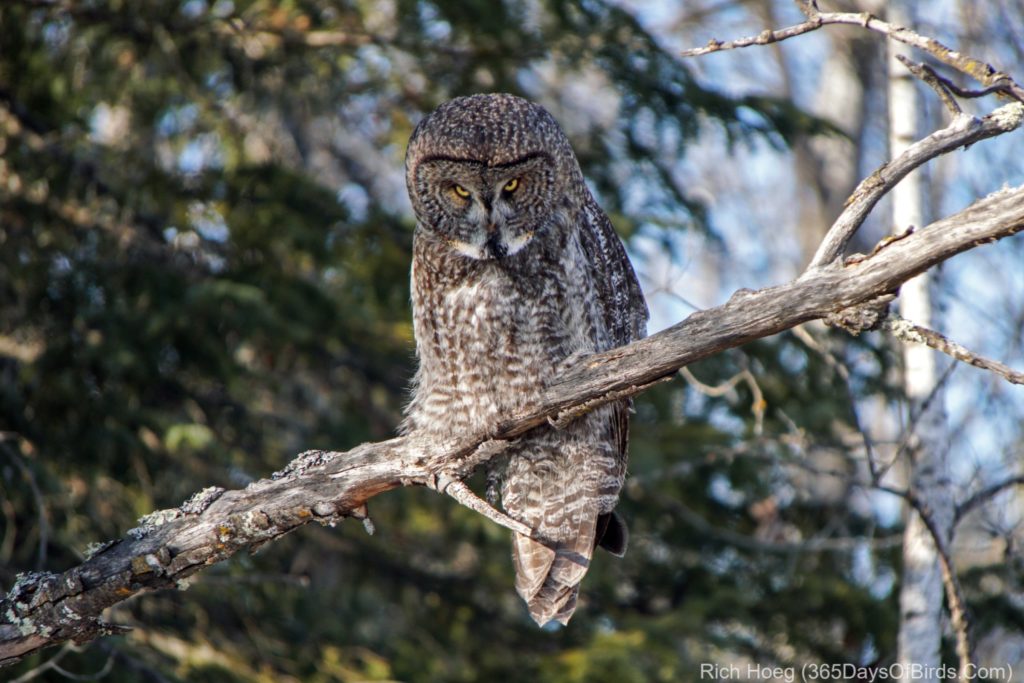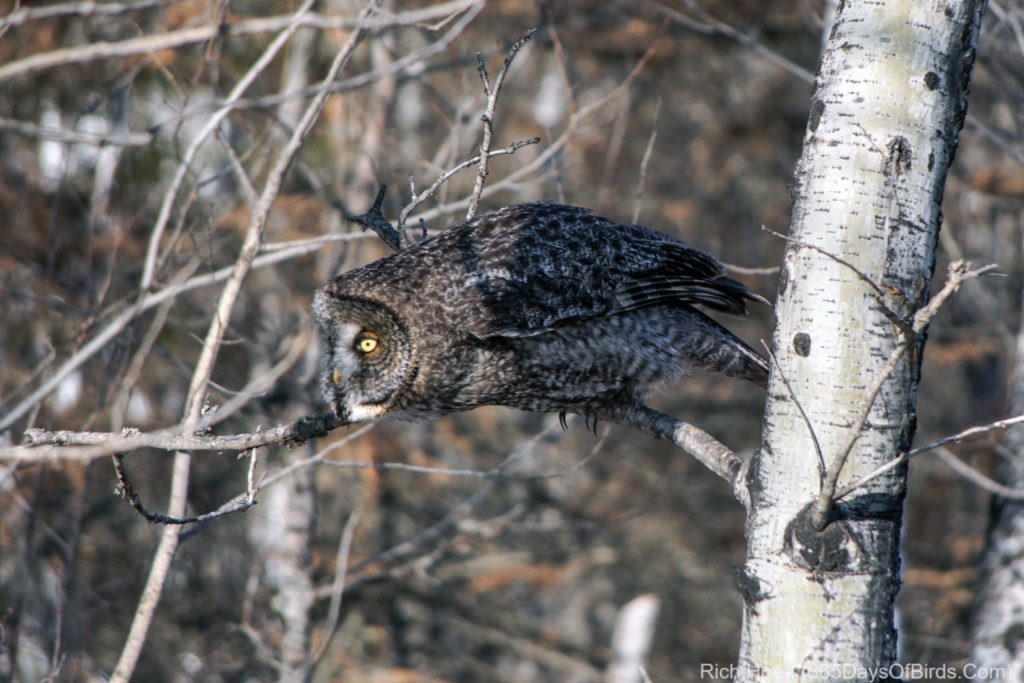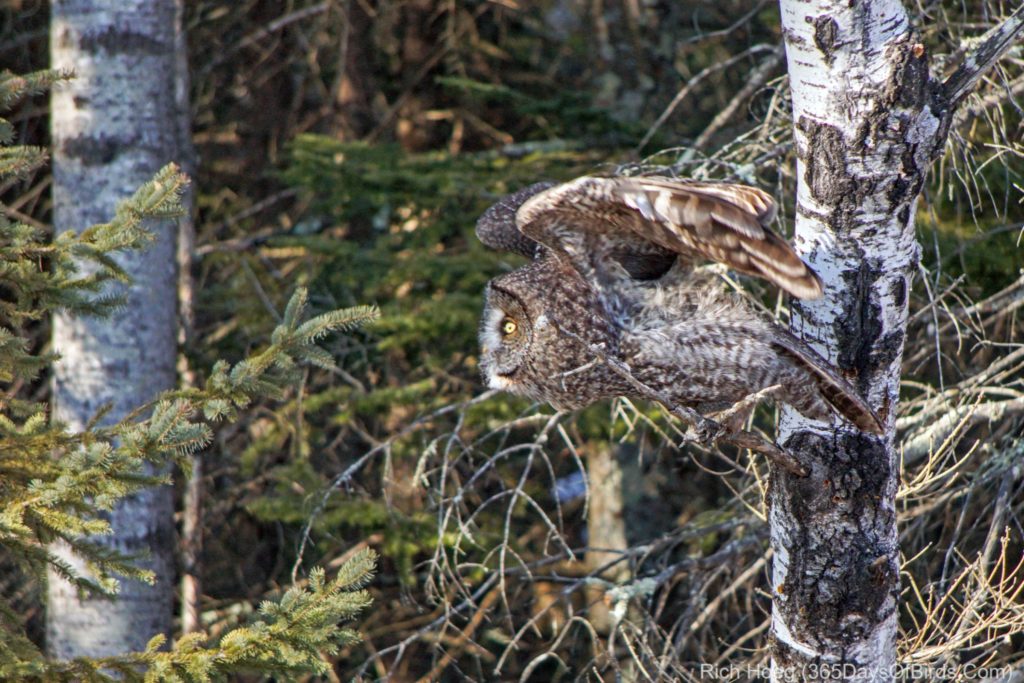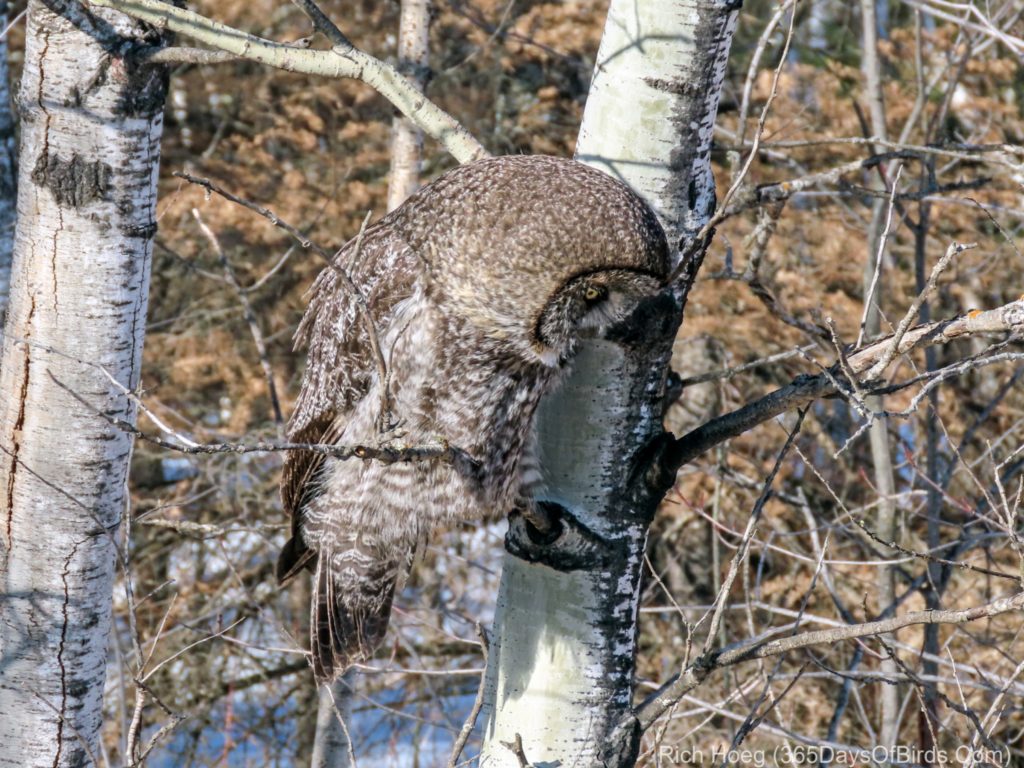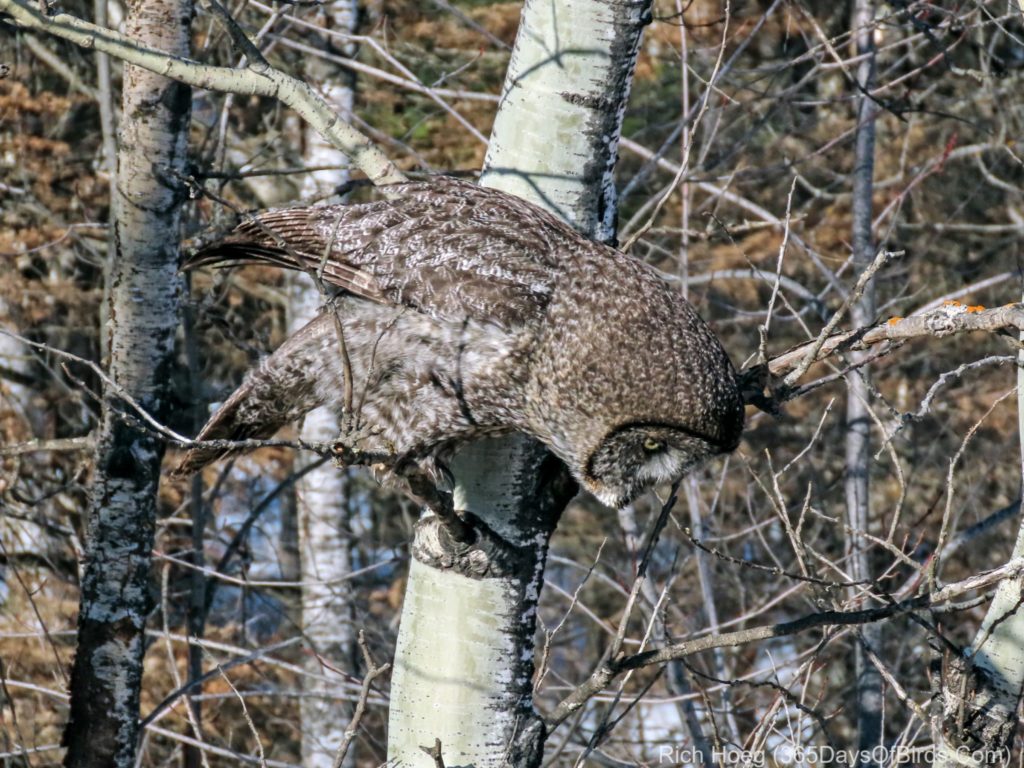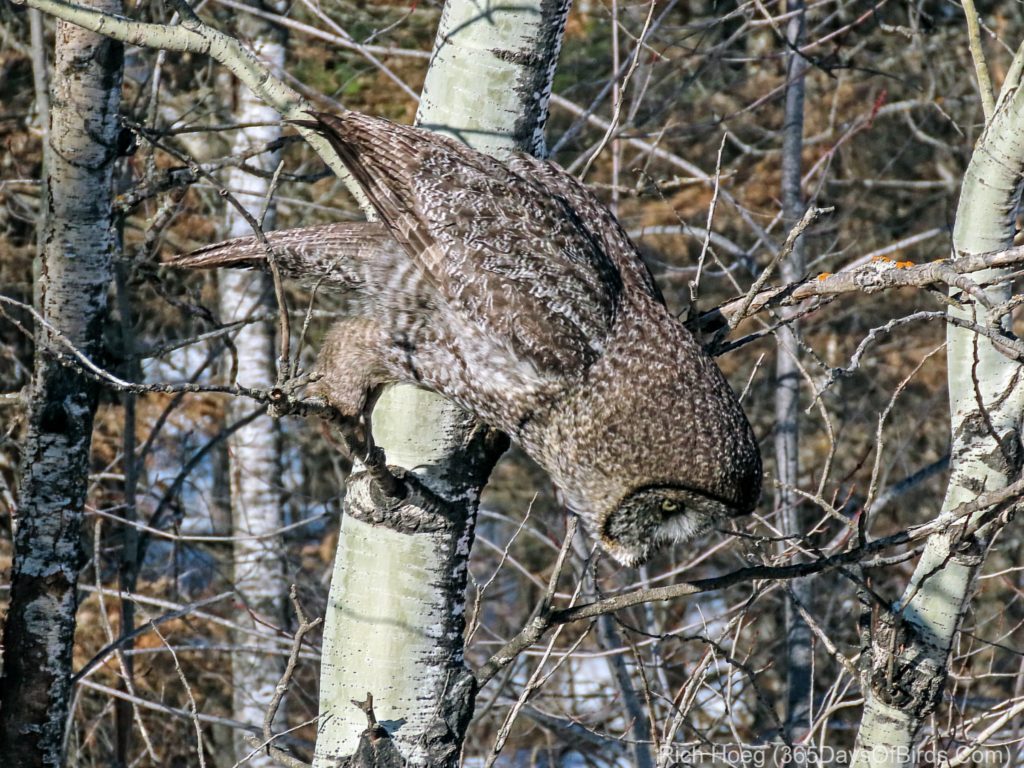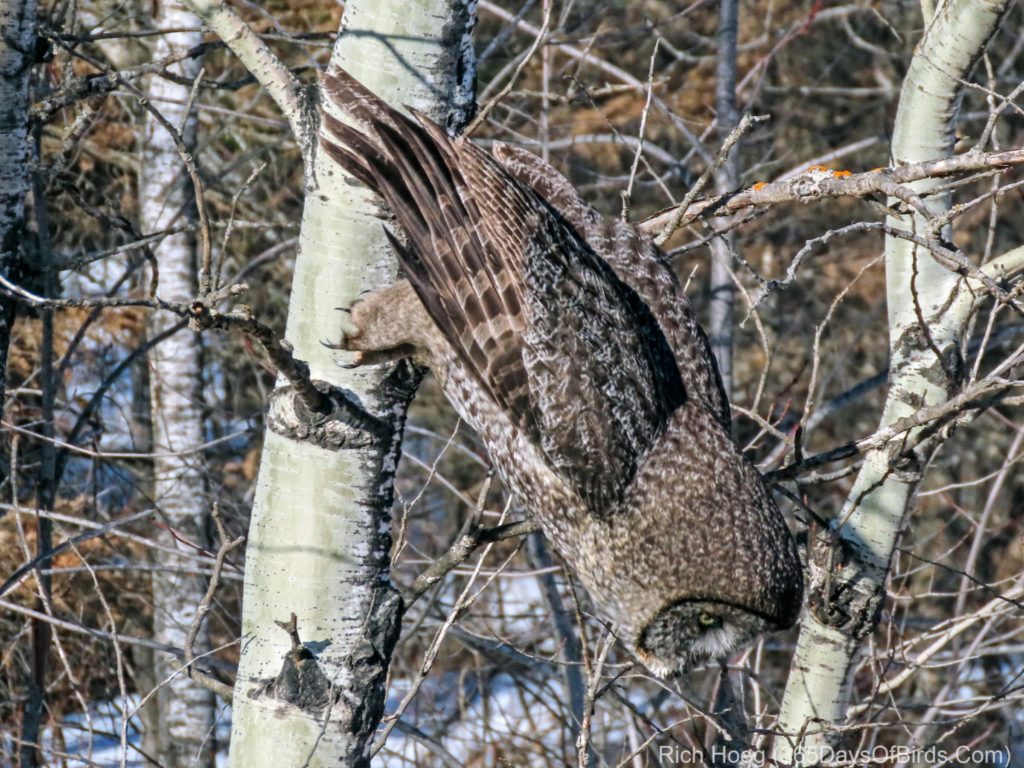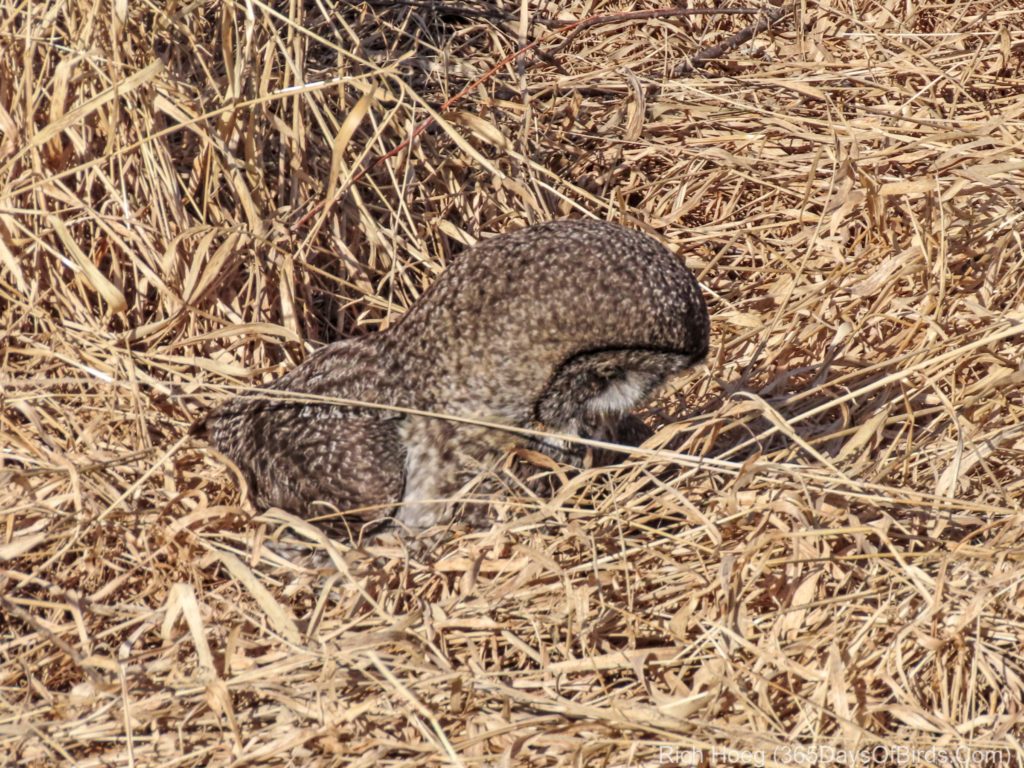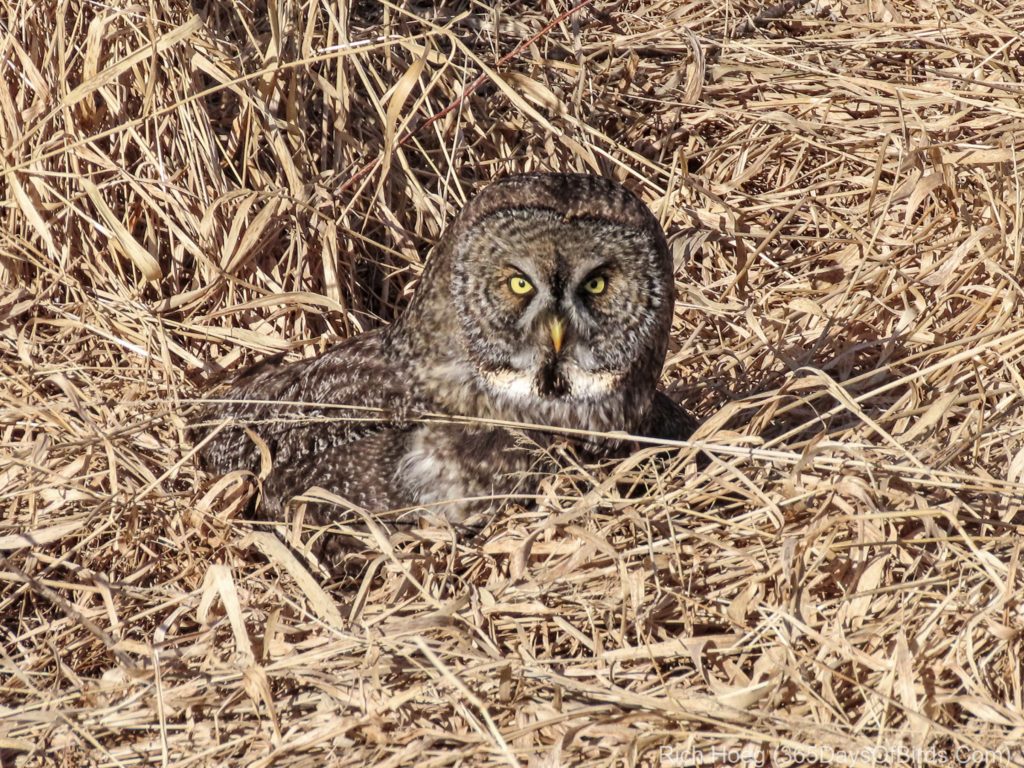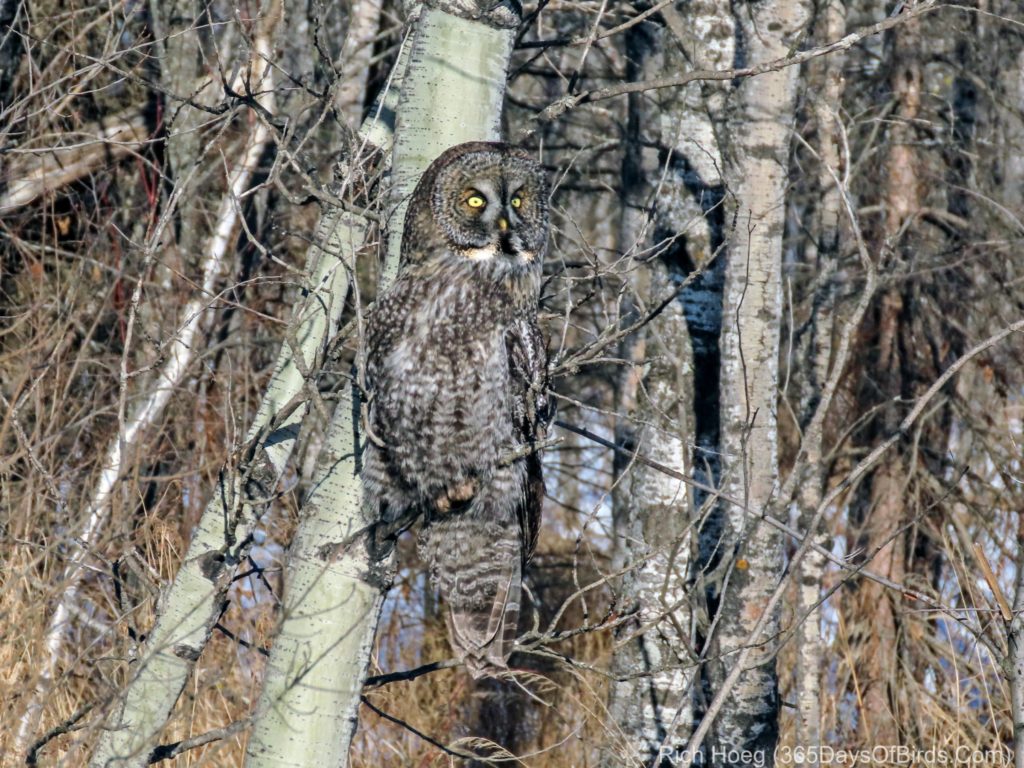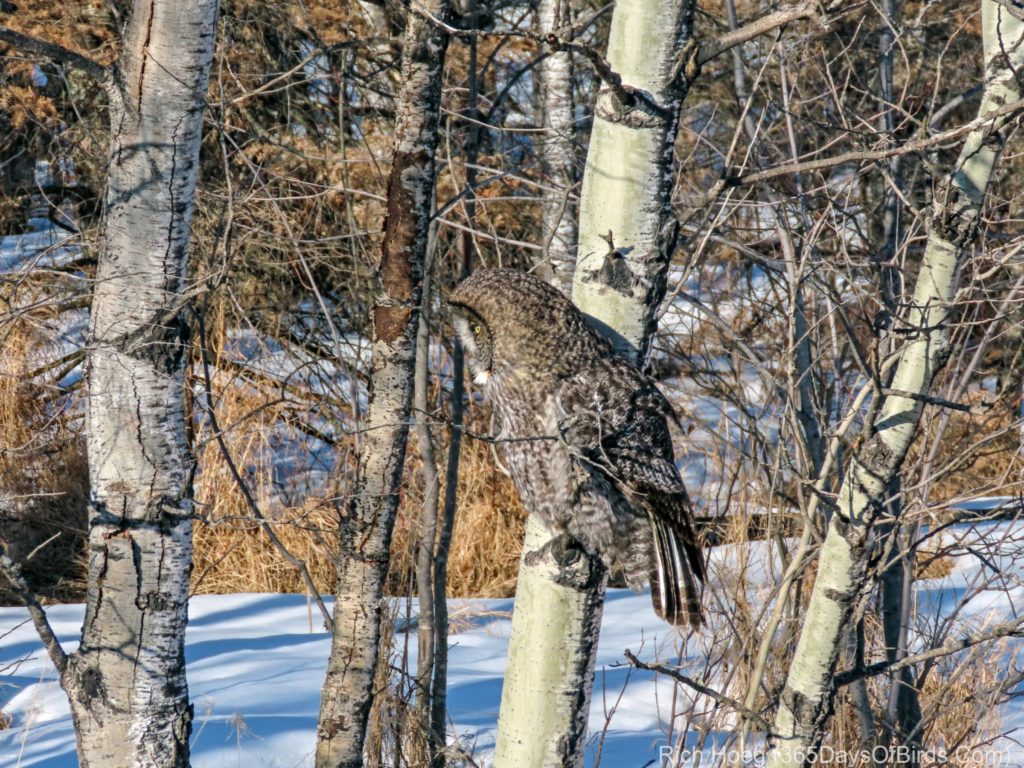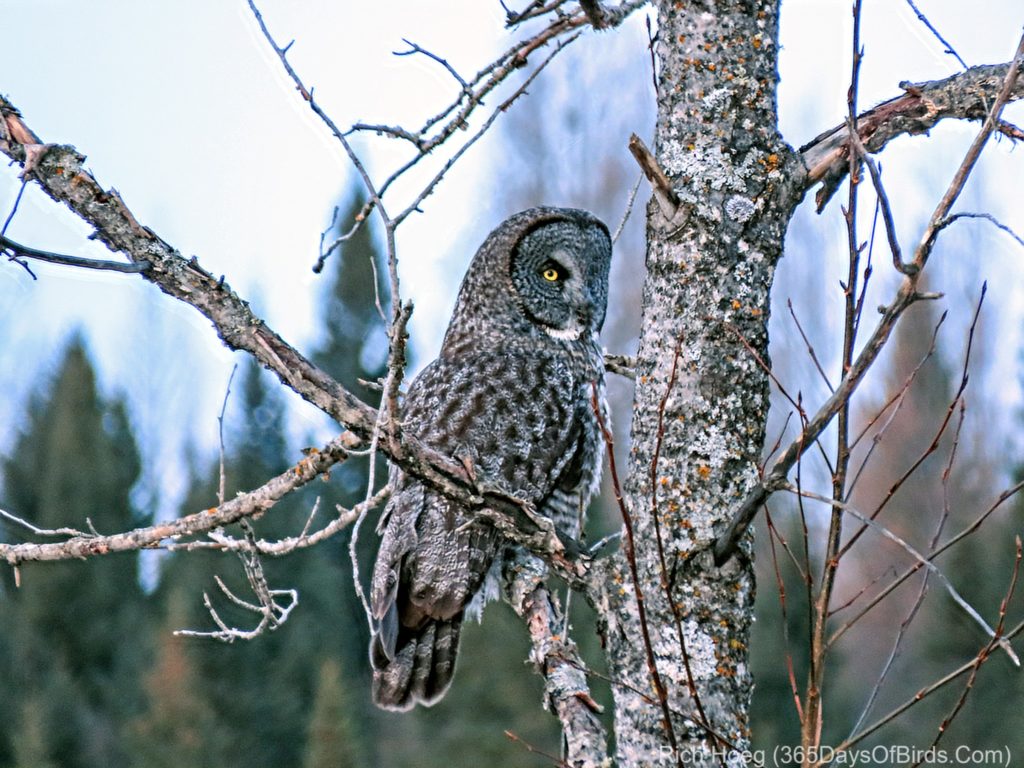Today is my 64th birthday … kind of strange with Coronavirus. Family can not come over. Oh well … there is still birding! I spent the morning in Sax-Zim Bog, and then came home to bicycle along the North Shore of Lake Superior. I finished the afternoon with hike over to my own Great Horned Owls (not owlets yet … or they are hiding under Mom). It was a fun day, just not what I would planned a few weeks ago.
Birthday Bald Eagles (all different birds migrating into the Northland)
Not to be outdone, I found a Northern Hawk Owl. If I can still find it by April 7th it might actually be nesting! I was lucky the temperature was still below freezing (30F) and the sun had just come out. I was able to mostly walk on top of the crust. When I broke through the snow was still two feet deep. After spending 20 minutes with this owl, I decided I had better hoof it back to the road before the hike would become a real slog (i.e. each step would break through the crusted snow).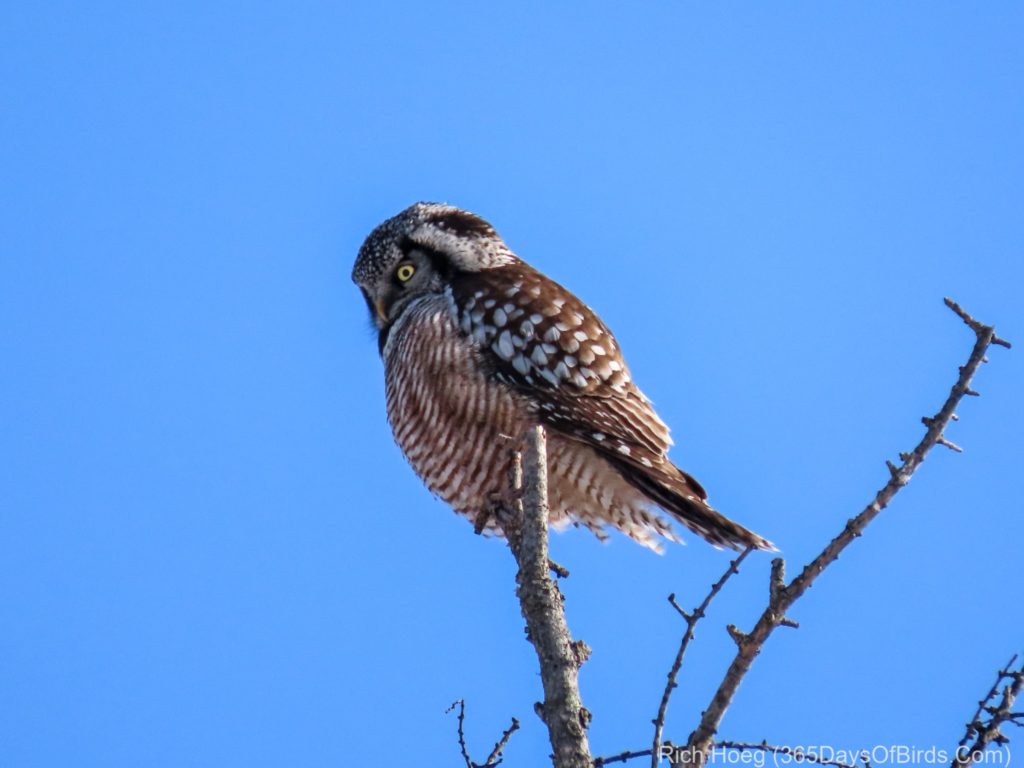
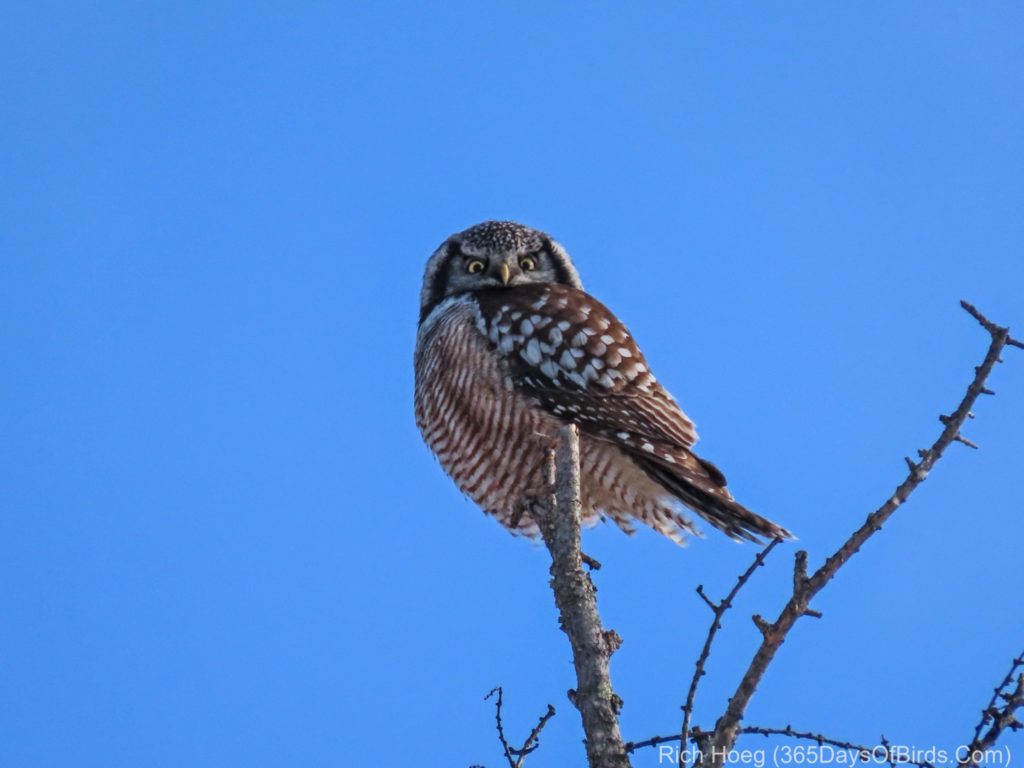
I have higher resolution versions of all these images, but I decided to optimize this post for faster loading.
